Slow Computer After Restart: 4 Quick Fixes
If like me, you rarely restart your PC, it can be frustrating if the system begins to act slowly after doing so. In most cases, it’s just a temporary issue related to background processes that will disappear once the desktop is in full swing. However, if you’re getting a prolonged slow computer after a restart, it could signal a deeper problem.
After doing some further research and testing, here’s everything you need to know about why your computer can slow down after a restart and how you can fix it.
Why do I get a slow computer after restart?
Here are some of the most common reasons your computer may act slow after a restart:
Lingering Background Processes – After a restart, some applications and processes might start running in the background that you usually don’t run. These will consume system resources, slowing your computer more than usual.
Unwanted Startup Programs – Startup programs are all the programs and software on your PC configured to launch in some form on startup. Whether you’ve installed new software or older programs are reappearing, there’s probably a few unwanted programs hogging system resources.
Windows and Software Updates – Restarts are often necessary after updating Windows and other software. Updates often introduce new features, background processes, and take up extra hard drive space, which could impact performance.
Malware – Viruses and other malware are always a looming threat. Sometimes restarting your computer allows malware to infect the system further or trigger a deeper attack, which can cause poorer performance.
System Corruption – Over time Windows systems files can go missing or become corrupted. This effect can be more pronounced after a restart as Windows tries to initiate all its startup processes.
Low Disk Space – Over time, temporary files can accumulate and affect system performance, especially on startup. This coupled with recent updates and disk fragmentation can lead to a slower computer. If your hard drive is already quite full, it might be time for a clean-up.
How to fix a slow computer after restart
Unless there are serious hardware problems, speeding up your PC is a simple task. Follow these steps to get things running smoothly again:
1. Scan for Malware
Even with an antivirus running, emerging malware can still slip through the cracks. Whenever your PC is having performance issues, it’s wise to always start with a full system malware scan.
You can do this via Windows’ own Virus & threat protection area or with a good third-party antivirus like Avira or Bitdefender.
2. Kill Unneeded Background Processes
Not all background processes are necessary to use your computer safely. You can kill these using the Task Manager to free system resources.
1. Right-click on the taskbar at the bottom of the screen as select Task Manager.
2. Use the CPU and Memory tabs to sort which programs are using the most resources.
3. Avoid any you don’t recognize or are vital for Windows, such as Windows Explorer, then use the arrow to expand its processes.
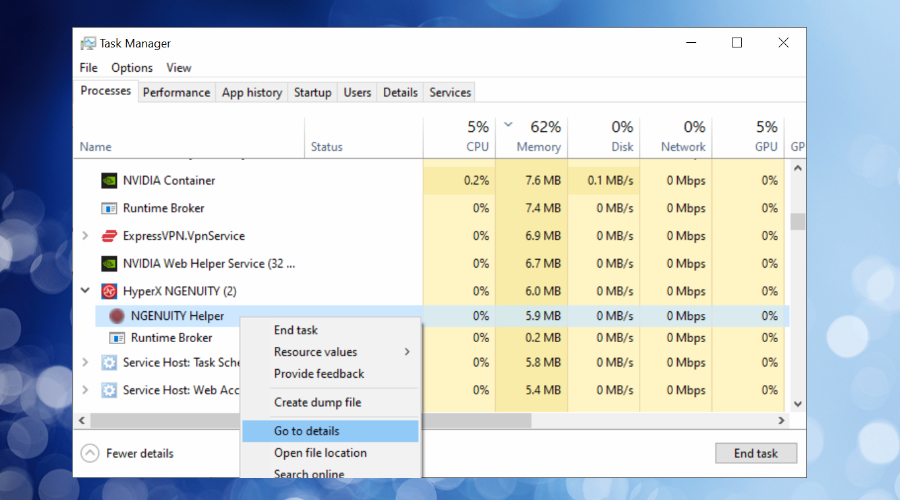
4. Right-click and select Go to details to be taken directly to the process.
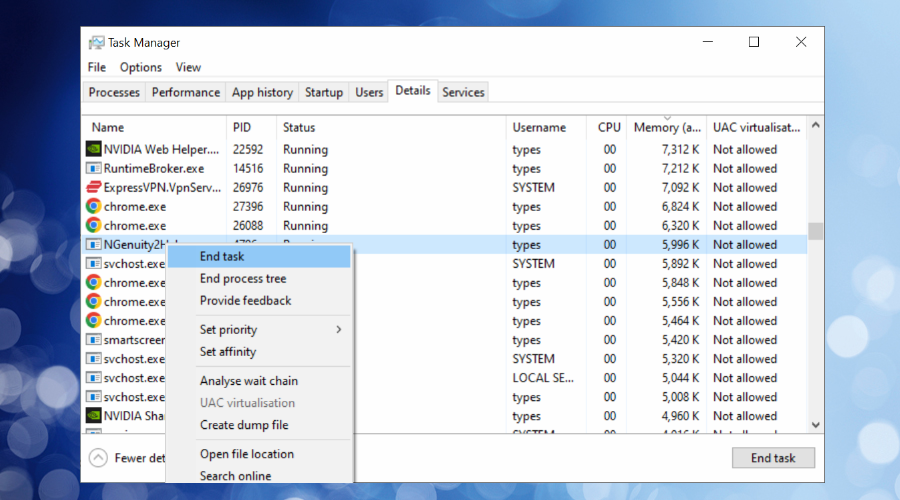
5. If you’re sure you want to kill the process, right-click and select End task.
Sometimes processes will instantly reappear, so another method is to configure your startup programs.
3. Configure Your Startup Programs and Uninstall Unused Programs
Over time your system will become full of programs and software, many of which will run in the background. Even if you want to keep a program, you can set it not to launch on startup and slow your computer.
1. Right-click on the taskbar at the bottom of the screen and select Task Manager.
2. Click the startup tab at the top to view all programs and their startup status.
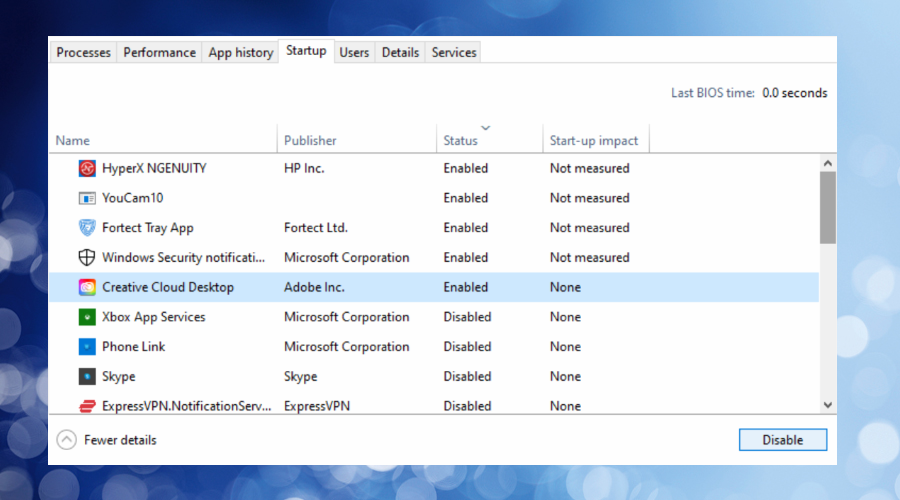
3. To prevent a program from running on startup, highlight it in the list and click the Disable button.
At this point, it’s also worth considering whether there are any old programs you no longer use and need uninstalling completely.
1. In the start menu search bar type programs and select the Add or remove programs app.
2. Browse the list and follow the prompts to uninstall any programs you no longer use.
3. Use Fortect
Fortect is an excellent all-in-one tool that can repair Windows corruption, fix the Windows Registry, and remove old software values in the registry. It also cleans your hard drive of temporary and junk files, as well as cached browser data.
1. Download and Install Fortect on your computer.
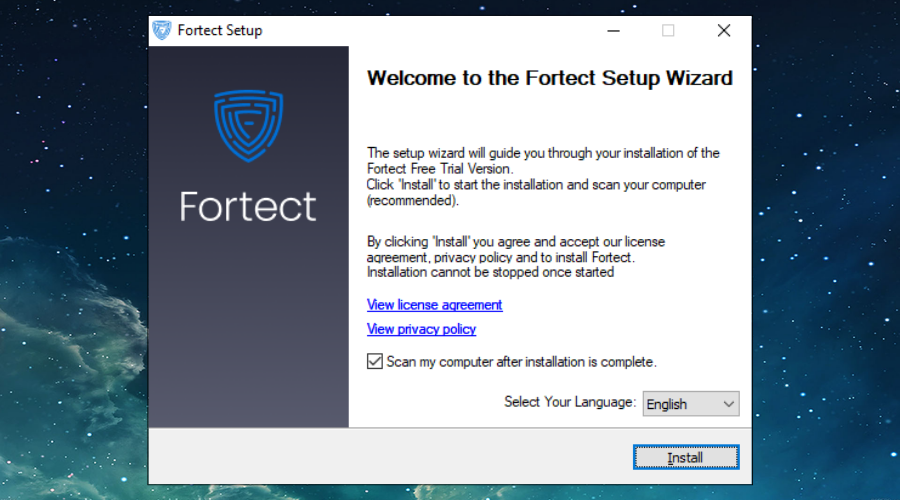
2. Launch the program and Start scanning.
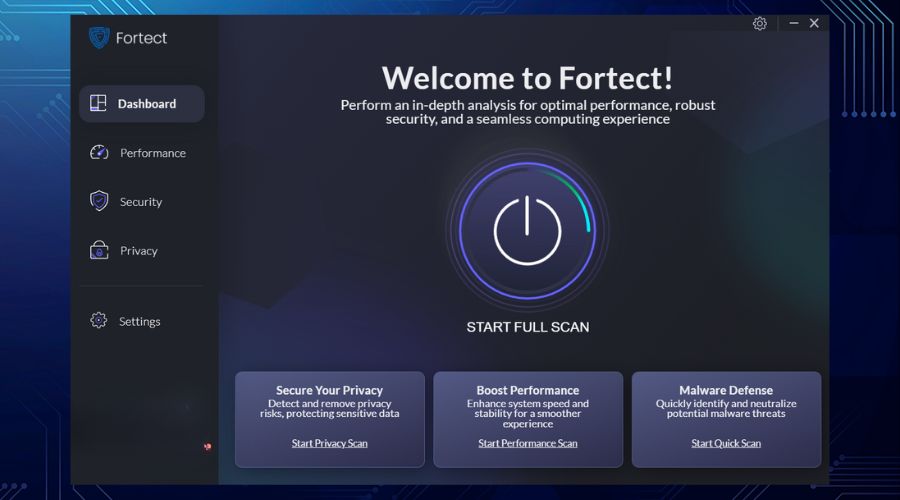
3. Click on Start Repair to start fixing Windows problems.
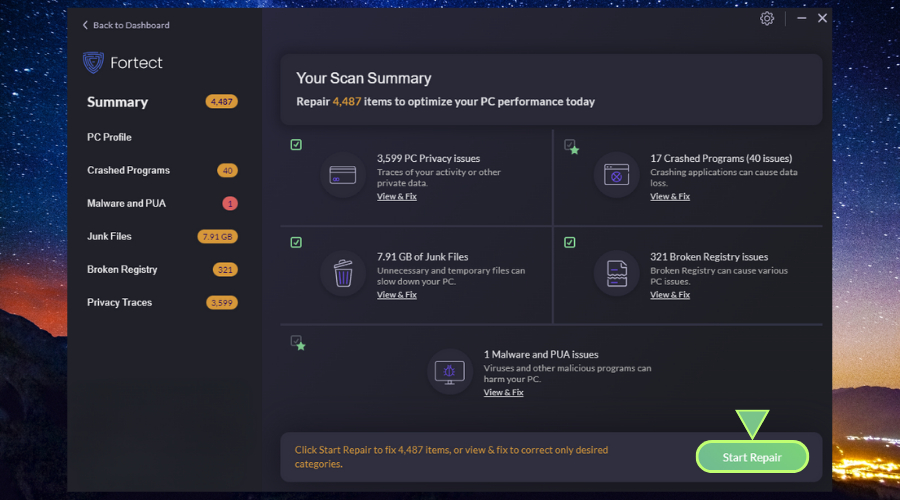
Once you have repaired serious problems like corrupted system files, Fortect is good to use every few weeks to maintain performance and keep your hard drive free from junk.
4. Run Windows Disk Defragmenter
Hard drives become fragmented after long term use as files and other data are scattered in non-sequential clusters across the disk. Using Windows Disk Defragmenter reorganizes the data into contiguous blocks for better performance. Couple this with Fortect’s Registry fixer and your hard drive will be in tip top shape.
1. Type defrag into the start menu search bar and select Defragment and Optimize Drives.
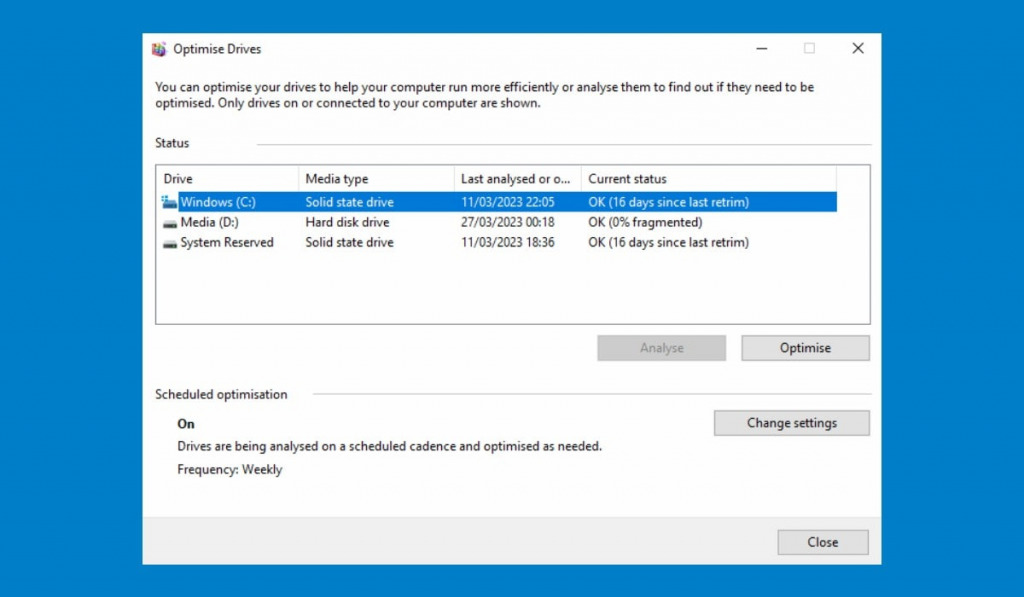
2. Select your main Windows drive and click the optimize button.
Depending on the schedule already set and the state of your drive this may take a few minutes or much longer.
Final Tips
If your computer continues to run slowly, it may be suffering from hardware failure or overheating. Running a Fortect scan will indicate how hot the core temperature is and how well your hardware is performing against other Fortect users.
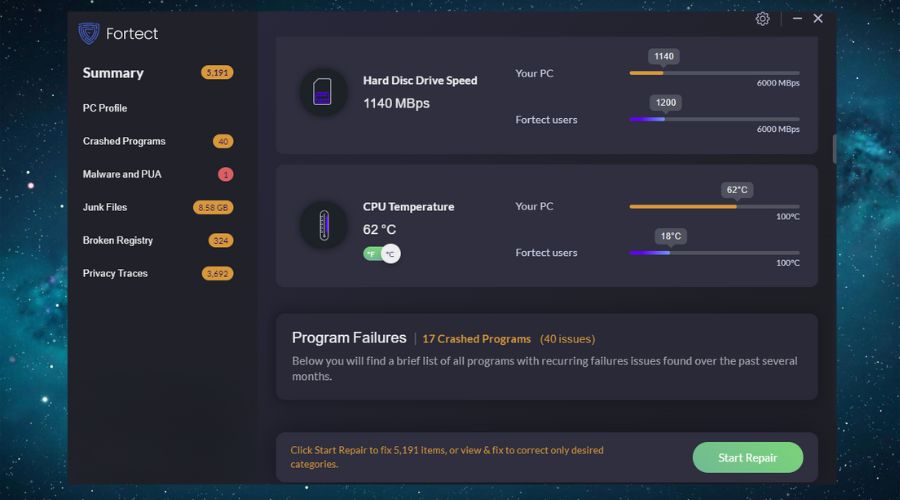
Windows Memory Diagnostic and the CHKDSK command can help detect problems with RAM or your hard drive, though in the worst cases they may need replacing.
Slow Computer After Restart: The Last Word
Ruling out hardware problems, a slow computer after restarting is not out of the ordinary. It’s usually caused by a combination of unneeded background processes and startup programs.
Windows Repair tools like Fortect can make sure you have all the bases covered by repairing system corruption and fixing the Windows Registry.




